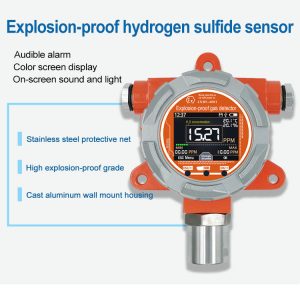Environmental protection is a pressing global priority, as human activities continue to impact our planet's delicate ecosystems. One critical aspect of environmental protection is the monitoring and control of air quality, particularly the presence of harmful gases. Gas sensors have emerged as indispensable tools in detecting and quantifying gases that pose risks to human health and the environment. This article explores the key role of gas sensors in environmental protection and their applications in various sectors
Understanding Gas Sensors:
Gas sensors are advanced devices designed to detect and measure the concentration of specific gases in the surrounding air. These sensors employ various technologies, such as electrochemical, semiconductor, and optical sensing methods, to accurately identify and quantify target gases. They can be calibrated to detect a wide range of gases, including carbon monoxide, nitrogen dioxide, ozone, volatile organic compounds (VOCs), and sulfur dioxide.
Monitoring Air Quality:
Gas sensors play a critical role in monitoring and assessing air quality, enabling governments, organizations, and individuals to take proactive actions to protect human health and the environment. By continuously measuring gas concentrations, these sensors provide real-time data on air pollution levels, facilitating the identification of pollution sources and the formulation of effective mitigation strategies.
Early Warning Systems for Industrial Emissions:
Industries are significant contributors to air pollution, releasing harmful gases during manufacturing processes. Gas sensors integrated into early warning systems enable prompt detection and response to industrial emissions. By monitoring specific gases released by industries, such as sulfur dioxide or nitrogen oxides, these sensors help minimize the impact on air quality and health, while also ensuring regulatory compliance.
Indoor Air Quality Monitoring:
Indoor air pollution is a growing concern due to the prevalence of enclosed spaces. Gas sensors are crucial in monitoring indoor air quality and identifying potential sources of contamination, such as faulty gas stoves or the off-gassing of building materials. By detecting elevated levels of carbon monoxide, VOCs, or radon, gas sensors contribute to maintaining healthy indoor environments and preventing long-term health issues.
Assessing Environmental Impact:
Gas sensors are employed in environmental impact assessments to gauge the effects of human activities on ecosystems. For example, they can be used to measure the concentration of pollutants near industrial sites, construction projects, or transportation routes. This information allows authorities to evaluate the environmental impact and implement necessary measures to mitigate pollution and protect ecosystems.
Support for Climate Change Research:
As climate change and global warming become increasingly urgent challenges, gas sensors are instrumental in climate change research. They help monitor and quantify greenhouse gas emissions such as carbon dioxide and methane, aiding in the measurement of regional and global emission levels. Accurate data from gas sensors support policy development, emission reduction strategies, and the evaluation of climate change mitigation efforts.
Air Pollution Control:

Gas sensors enable efficient air pollution control systems by providing accurate data for feedback and control mechanisms. In applications such as vehicle exhaust monitoring or smokestack emissions, gas sensors detect and measure pollutant concentrations. This data is then utilized to optimize pollution control technologies, such as catalytic converters or scrubbers, ensuring effective pollution reduction and compliance with environmental regulations.
Public Health Protection:
The presence of harmful gases in the air poses significant risks to public health. Gas sensors play a vital role in protecting public health by providing early warnings about high pollutant levels. By monitoring gases like carbon monoxide, nitrogen dioxide, and ozone, these sensors help prevent adverse health effects such as respiratory issues, cardiovascular problems, and allergic reactions.
Conclusion:
Gas sensors have proven to be indispensable tools in environmental protection efforts. They provide real-time data on gas concentrations, enabling effective monitoring, control, and mitigation of air pollution. From industrial emissions to indoor air quality, these sensors play a key role in safeguarding human health and preserving the environment. By harnessing the power of gas sensor technology, we can make significant strides in environmental protection and create a cleaner and healthier future for our planet.
 : +86 155 8830 2704
: +86 155 8830 2704 : jxdziot@gmail.com
: jxdziot@gmail.com
